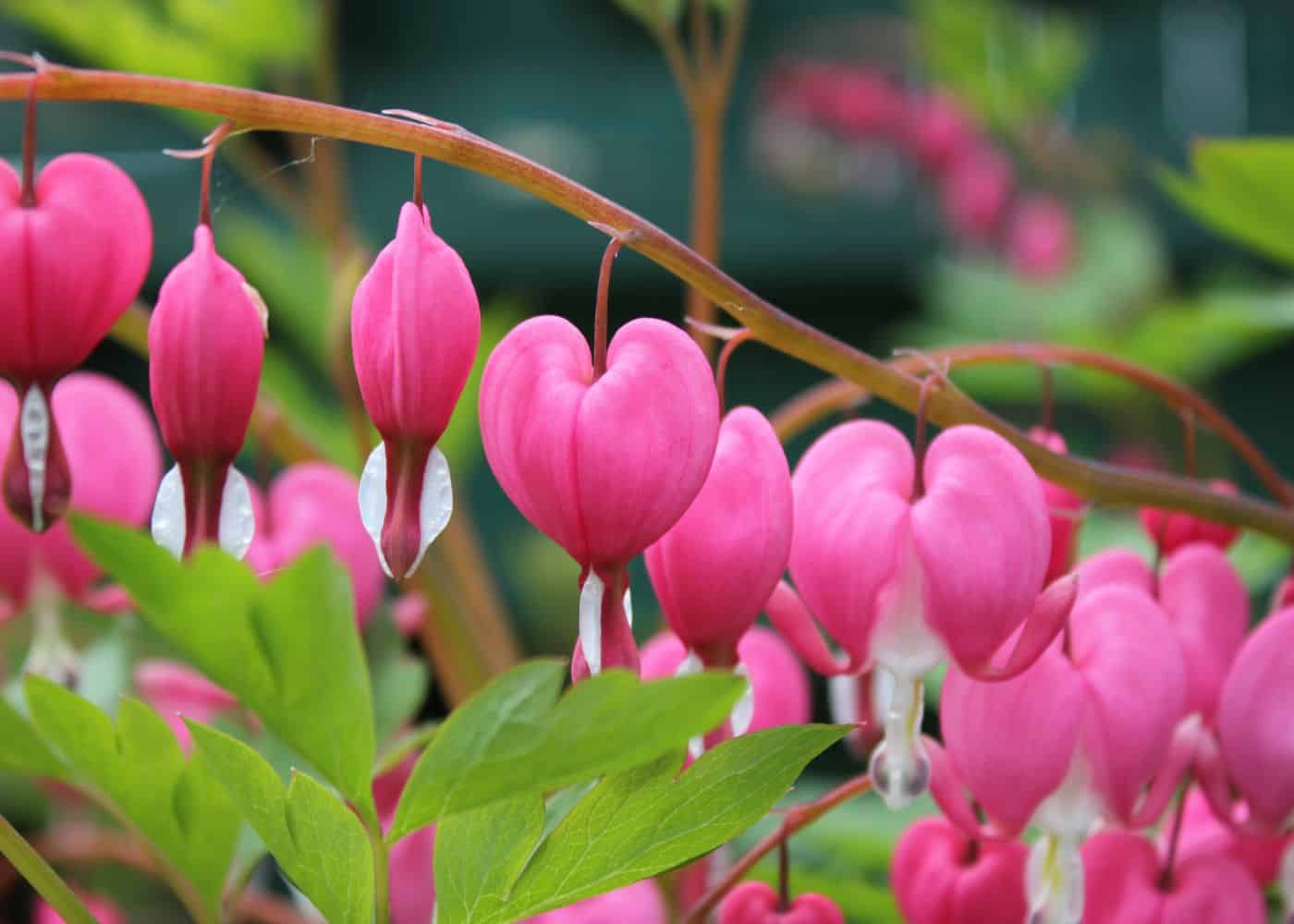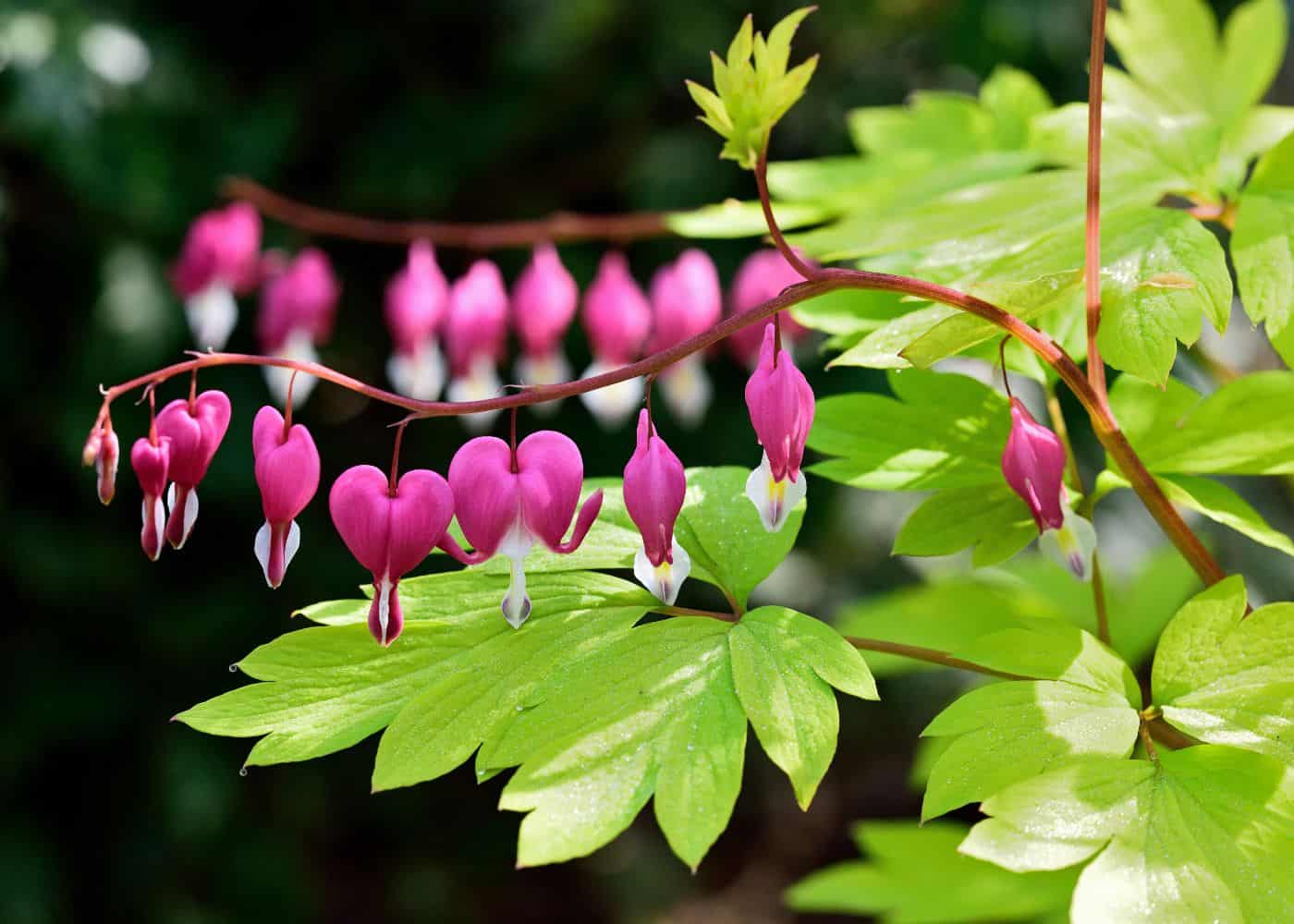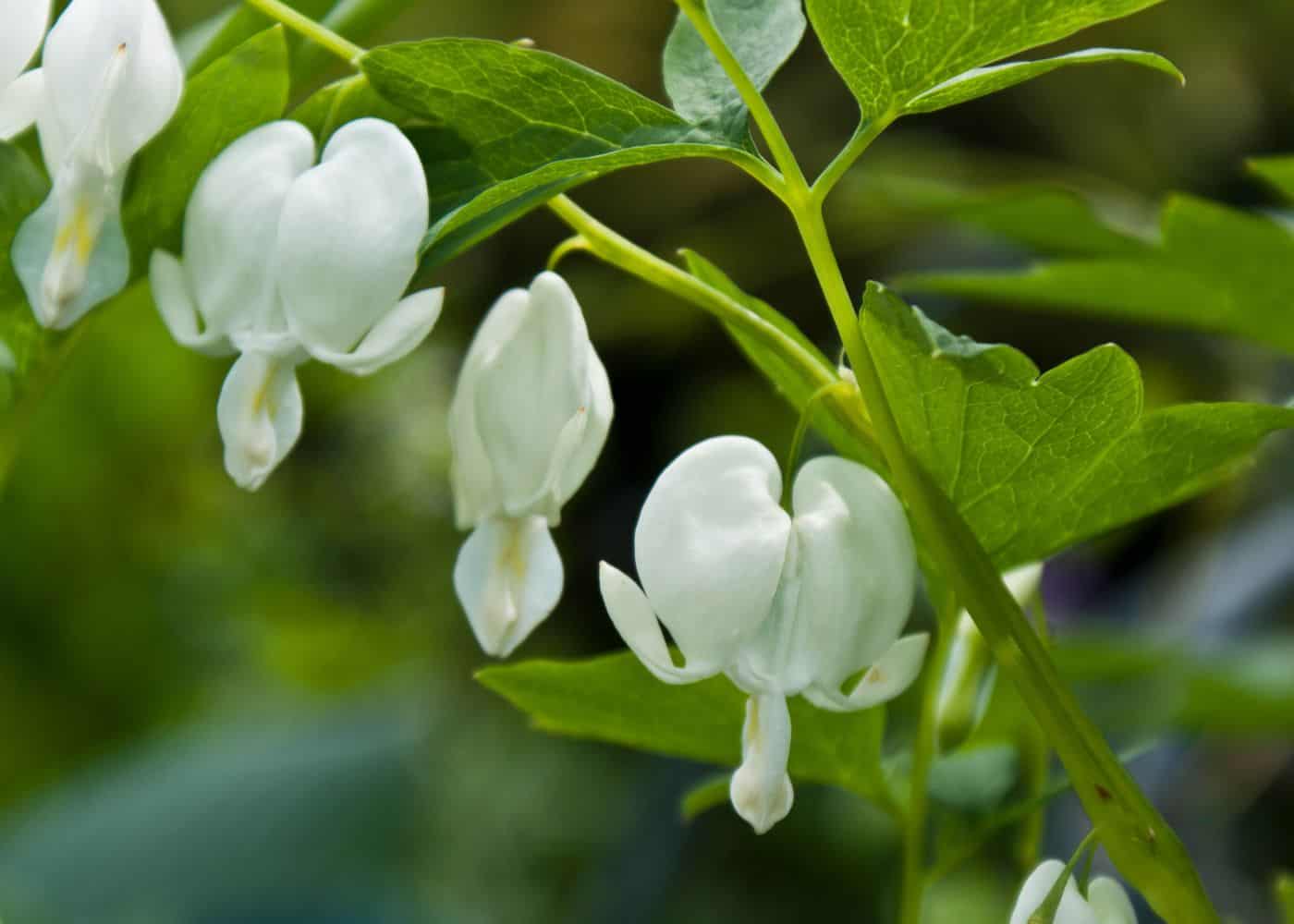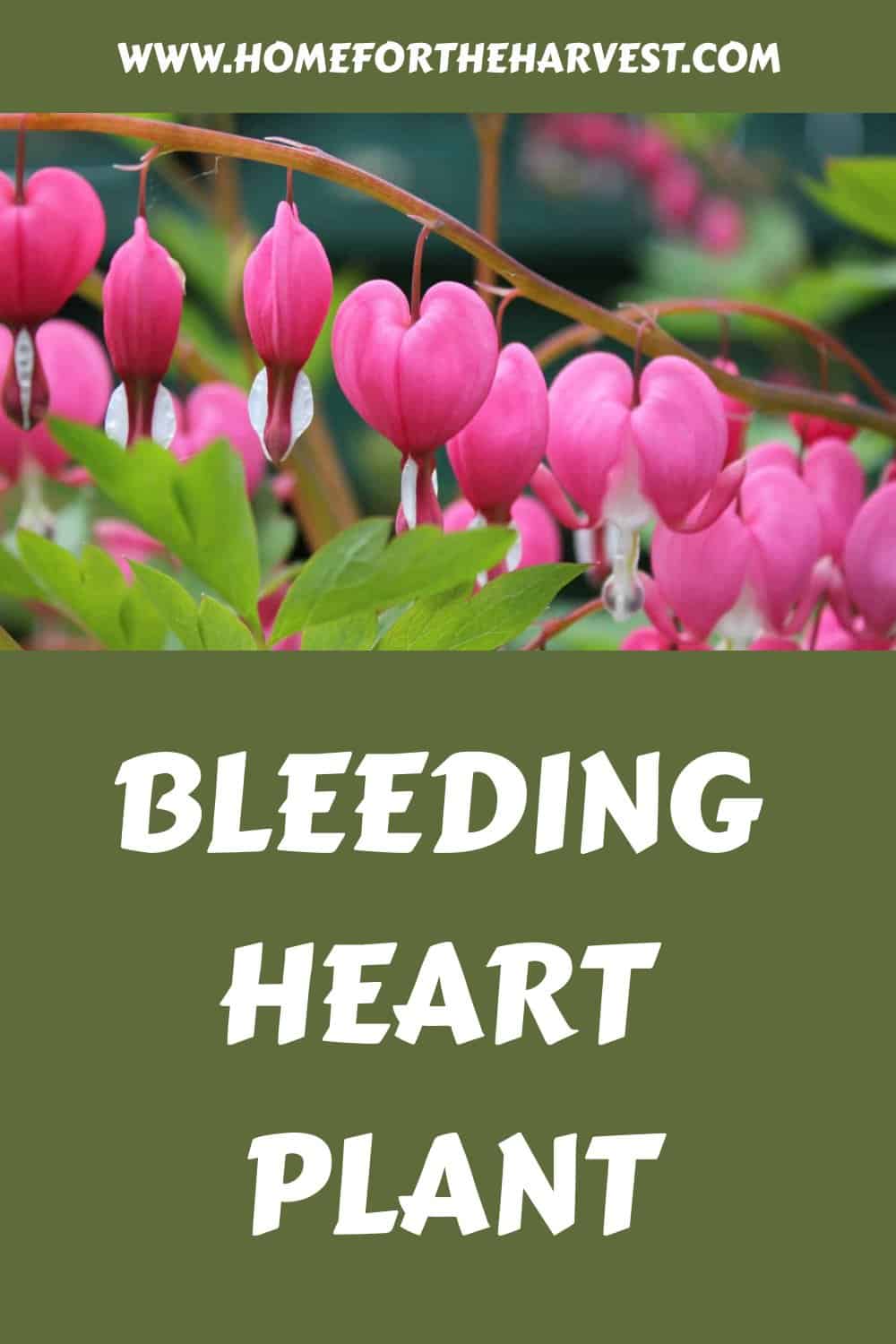Whether you’re looking for a unique early spring Valentine’s Day gift or just an adorable flowering plant to fill out your garden bed, look no further than the bleeding heart flower.
Bleeding heart plant is appreciated for the puffy heart-shaped blooms in a range of colors, depending on your chosen cultivar. They are relatively easy to care for, tolerating a range of soil conditions and humidity levels. Bleeding hearts are best grown in cooler conditions as warm temperatures and high sunlight can limit their flowering season. Divide after flowering or leave to self-seed to grow even more of these wonderful plants at no cost.
Read on to learn all about the bleeding heart plant and how best to grow it.

Bleeding heart flower basics
Bleeding heart flowers are one of the delights of spring, popping up on long stems that emerge from cheerful greenery. The common name comes from the shape of the gorgeous puffy blooms that look just like hearts, topped off by a contrasting petal that drips from the base.
The plant, scientifically known as Lamprocapnos spectabilis, was previously placed under the Dicentra genus and may still be labeled so in nurseries or online. Bleeding heart flower is the most commonly used name, but they are also known as lady-in-a-boat and lyre flowers.
Thanks to the shape of these flowers, they have connotations of romance, or more specifically, of unrequited love. Despite this somewhat negative meaning, these plants look stunning in any garden, treating owners to long lines of colorful blooms from late spring through to summer in USDA Zones 2-8. That makes these plants particularly cold-hardy!
Bleeding hearts flower for several weeks before they become dormant in the heat of the summer. However, the plant remains alive underneath the soil to pop up again once the heat has died down or in the following season. They also self-seed, giving you a long-lasting patch of bleeding hearts that continue to grow yearly.
These plants are also suitable for containers if the pot is large enough. This allows you to adjust the growing conditions throughout the year, especially if your environment doesn’t quite match the plant’s needs. They can even be grown indoors, although they will perform much better in outdoor settings.

Sunlight requirements for bleeding heart
Found in shaded woodland areas, bleeding heart flowers grow best when given partial shade throughout the day. This translates to around 4 hours of direct light or a full day of dappled shade under trees.
The direct sun should not be midday or afternoon sun when heat is at its highest. These plants are not accustomed to intense direct sunlight and become dormant when summer is at its peak. If exposed to too much light in warm regions, you will cut the flowering season of this plant drastically short.
Deeply shaded areas that receive very little light are also not suitable. While the plant may survive, it is unlikely to flower in these conditions. For the best blooms, a few hours of sunlight a day are required, without overdoing it.
Watering bleeding heart plant
Bleeding heart flowers require about the same amount of water as the rest of your garden – around one inch per week. When planted in the right spot, this amount should keep the soil slightly but consistently moist until the next watering.
Make sure to factor rain and the weather into your calculations on when to water. During periods of high rainfall, you can likely skip watering altogether. When temperatures are higher and evaporation is faster, you may need to water more often.
Watering technique is also important for these plants. In spring, lush green growth will appear as a backdrop for the gorgeous blooms to come. Avoid overhead watering at this time and during flowering, as it can quickly lead to the spread of disease among the dense foliage.
Avoid planting in low-lying garden areas where water collects or in areas with heavy clay soil. Although they enjoy moist soil, these plants don’t appreciate waterlogging. The roots will quickly die, especially during dormancy, if the soil does not drain well enough.
Humidity preferences of bleeding heart plant
Bleeding heart plants are not too fussy about humidity. They are generally tolerant of a wide range of humidity levels, from dry air to high humidity. Moderate humidity is recommended to balance moisture and prevent the spread of disease, but they can also handle high humidity well.

Temperature requirements for bleeding heart
These plants prefer cooler conditions that match their native habitats to grow their best. Aim for around 60F in spring, with some variation slightly higher or lower, for the best flowering. High temperatures will cut the flowering season of this plant short, so avoid planting if temperatures in your area are consistently above 75F in spring.
Growing these plants in containers
As long as their needs are met, bleeding heart plants can grow just as well in containers as they do in the ground.
The first need to meet is space. A large container is essential for these large herbaceous plants that ground to around 3 feet wide when mature. Depth is also important to contain the deep root system. Choose a pot a minimum of 12 inches wide, preferably larger, for the most success.
Choose a high-quality potting soil to fill the container, mixed with some compost to boost organic matter and coconut coir or peat moss to lighten the mixture and retain moisture. If your pot is very deep and will become heavy with excess potting soil, place empty containers at the bottom of the pot to lighten it and reduce the amount of soil needed, making sure the pot still drains well.
Plant your bleeding heart at the same soil level as it was previously, leaving plenty of space for the roots to expand outwards. It should be happy in this container for a couple of years before the soil needs to be changed.
When growing indoors, it’s best to move the plant outdoors in spring for strong flowering. Once temperatures rise above 75F, you can bring the pot indoors again to continue growth.
Fertilizing bleeding heart flower
One thing you don’t really need to worry about when growing these plants is fertilizer. They are not considered heavy feeders and generally grow well without an additional top-up of nutrients. However, this does largely depend on the quality of your soil. If you have amended the soil before planting and continue to improve health season after season, there is no need to apply additional fertilizers.
If you’ve planted in poor-quality soil, you can apply a slow-release fertilizer along with some additional compost to make up for the lack of nutrients. This only needs to be applied once per year in spring to maintain the plant throughout the season.
Also, consider mulching with compost or another organic material in the spring. This helps retain moisture in the soil and also keeps the roots cool as temperatures increase.
Pruning bleeding heart flower
Pruning during the short season of this plant is usually not required. In containers, you can trim slightly to manage growth, but they can largely be left alone to grow without much input from you.
You may want to prune toward the end of the season as the plant begins to die back. Don’t cut back too early, as this can disrupt the plant’s natural processes, impacting its emergence again the following season. Once most of the leaves have turned brown, you can cut back the plant and compost the leaves.
If you want your plants to self-seed, avoid trimming the fading flowers too early. You can either leave the seeds to drop around the plants or collect them at the end of the season to plant in another part of the garden. They may take a few years to flower but will become established staples of your beds in no time.
Propagating bleeding hearts
There are several ways to propagate your bleeding heart plants, providing many avenues for you to fill your garden with these gorgeous blooms.
From seed
At the end of the season, collect your seeds or allow them to fall around the plant to grow more plants with little effort. Although this method is low-maintenance, it will take several years for the plants to mature and produce more flowers.
If you’ve collected seeds to sow the following year, consider starting indoors so the seedlings can be planted out as soon as the weather warms in spring. Alternatively, sow directly into pots that can be kept indoors and move out later to continue growth, disturbing the roots less in the process.
By division
To instantly double your stock, consider dividing. The ideal time to divide is right after flowering when the plant has begun to die back.
Use a shovel or fork to loosen the soil around the roots, gently lifting the plant from the base. As their root systems are quite large, you may need to leave some of the deeper or more horizontal roots behind. Don’t worry about some slight damage – the plant will recover well.
Grab a sharp and disinfected knife and cut into the root ball to separate the plant into sections containing at least one bud, preferably more. Ensure your cuts are as clean as possible for the quickest recovery and to prevent rotting.
Replant each of the divisions with several feet of spacing to accommodate their mature growth. Plant them as you would any nursery plant or seedling by amending with compost first for healthy growth. Water well after planting to allow the roots to establish themselves in their new spaces.
From cuttings
Bleeding hearts can also be propagated by cuttings, although this method is the least likely to be successful. If you want to give it a go anyway, grab a cutting several inches long, preferably from an area of new stem growth.
Remove the leaves from the bottom half of the cutting and dip the end in rooting hormone powder. This will stimulate root growth, increasing your chances of success. Plant the cutting in a container filled with equal parts coconut coir and perlite, making sure the leaves remain above the soil line. Water well and cover the entire container with a clear plastic bag to increase humidity around the pot.
Move the pot to a warm area to encourage root growth and keep the soil moist. Once new growth develops, you can transplant the cutting into a larger container to continue growing.
Pests & diseases affecting bleeding heart plants
The biggest enemy of bleeding heart plants is slugs and snails. They enjoy nibbling on the foliage and do their damage at night, making them hard to spot. Pick them off by hand or use traps buried in the soil to catch them. Also, watch for aphids that can reproduce rapidly and decimate a plant quickly.
Look out for common fungal diseases like powdery mildew that affect similar shrubs. Avoid overhead watering and provide adequate airflow to avoid fungal issues in the future.






